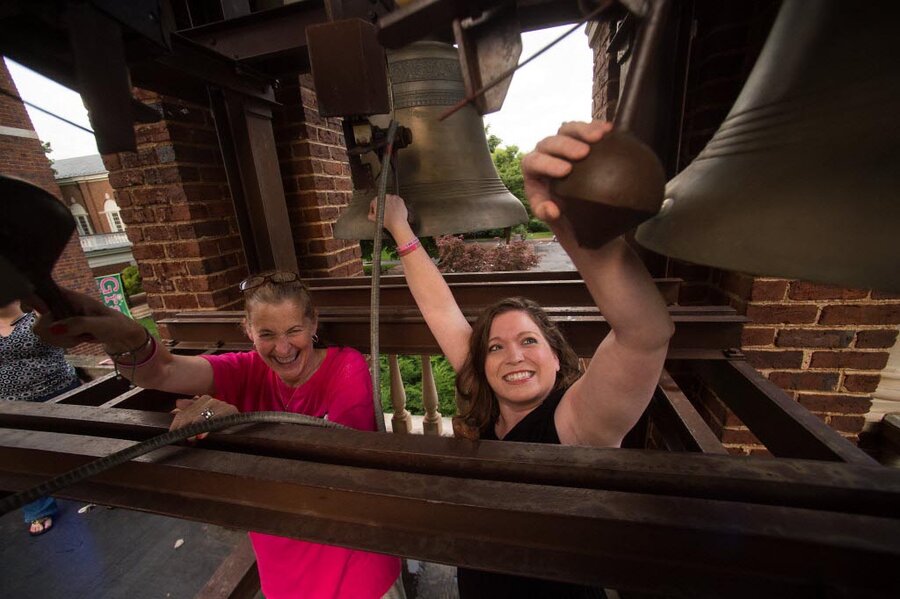Virginia judge approves alumnae plan to save Sweet Briar College
Loading...
Sweet Briar College, the 114-year-old all-women’s liberal arts school in central Virginia, will stay open for the next school year after a judge signed off on a mediated settlement to keep the school afloat.
Bedford County Circuit Judge James Updike approved the mediated plan today to keep the liberal arts college afloat. The plan, put forward by Virginia Attorney General Mark Herring, called for endowed funds and money recently donated by alumnae to fund the college’s 2015-16 academic year.
School leaders announced in early May that “insurmountable financial challenges” meant the college would have to be shuttered in late August.
School enrollment has hovered around 700 students in recent years, but dropped by roughly 8 percent between the 2009-10 and 2014-15 school years, according to Inside Higher Education. The college charges about $47,000 a year in tuition, fees, and room and board, but in a bid to attract more students it discounts tuition by an average of 60 percent, the Washington Post reported, leaving it in precarious financial position. The school had recently tried to refocus on what makes it distinctive, which involved cutting the volleyball team and classes in Italian and German and increasing emphasis on science, technology, and engineering.
Sweet Briar alumnae were skeptical of the severity with which the administration characterized the college’s financial troubles, but launched an aggressive fundraising effort to keep the school open. The former students set up a “Saving Sweet Briar” website to collect donations. At press time, the site has $21 million in pledges and home page headlines that read “Sweet Briar Saved” and “Time To Keep Your Promi$e.”
The mediated settlement calls for using $12 million of the donations to help fund the school year, as well as the easing of restrictions on the college’s $16 million endowment and the appointment of a new president once the school’s governing board is reformed.
The settlement will also end litigation brought against the college by some alumnae. Some of them criticized Mr. Herring, a likely Democratic candidate for governor, for not leading the legal challenge to keep the school open.
"The agreed settlement certainly is better for all parties than continued litigation, and more importantly, Sweet Briar College will stay open," Herring said in a statement on Saturday.
Students and alumnae learned about the plans to close Sweet Briar in early March. Diana Sampson, a constitutional litigator who graduated from Sweet Briar in 2008, told the Monitor in March that she was “absolutely devastated and shocked” when she found out.
The coverage of Sweet Briar’s potential closure drew new attention to the rapid decline of all-women’s colleges in the United States in recent decades. Fifty years ago there were 230 women’s colleges in the country, according to the Washington Post. Today there are just over 40.
Some schools, like Vassar College in Poughkeepsie, N.Y., and Randolph-Macon Woman’s College in Lynchburg, Va., went coed. Others merged with nearby colleges, or shut down completely.
Some observers say that, now that women have access to traditionally male-dominated universities, the need for all-women’s colleges have faded.
“As women continue to advance in society and as the detrimental effects of gender discrimination continue to fade, women’s colleges will continue to decline in number and in purpose,” wrote Brian Burton for the Harvard Political Review in 2010.
Many Sweet Briar students had made plans to attend other schools next year, according to the AP, but many said they would return to the college if they could.
This report includes material from the Associated Press.








